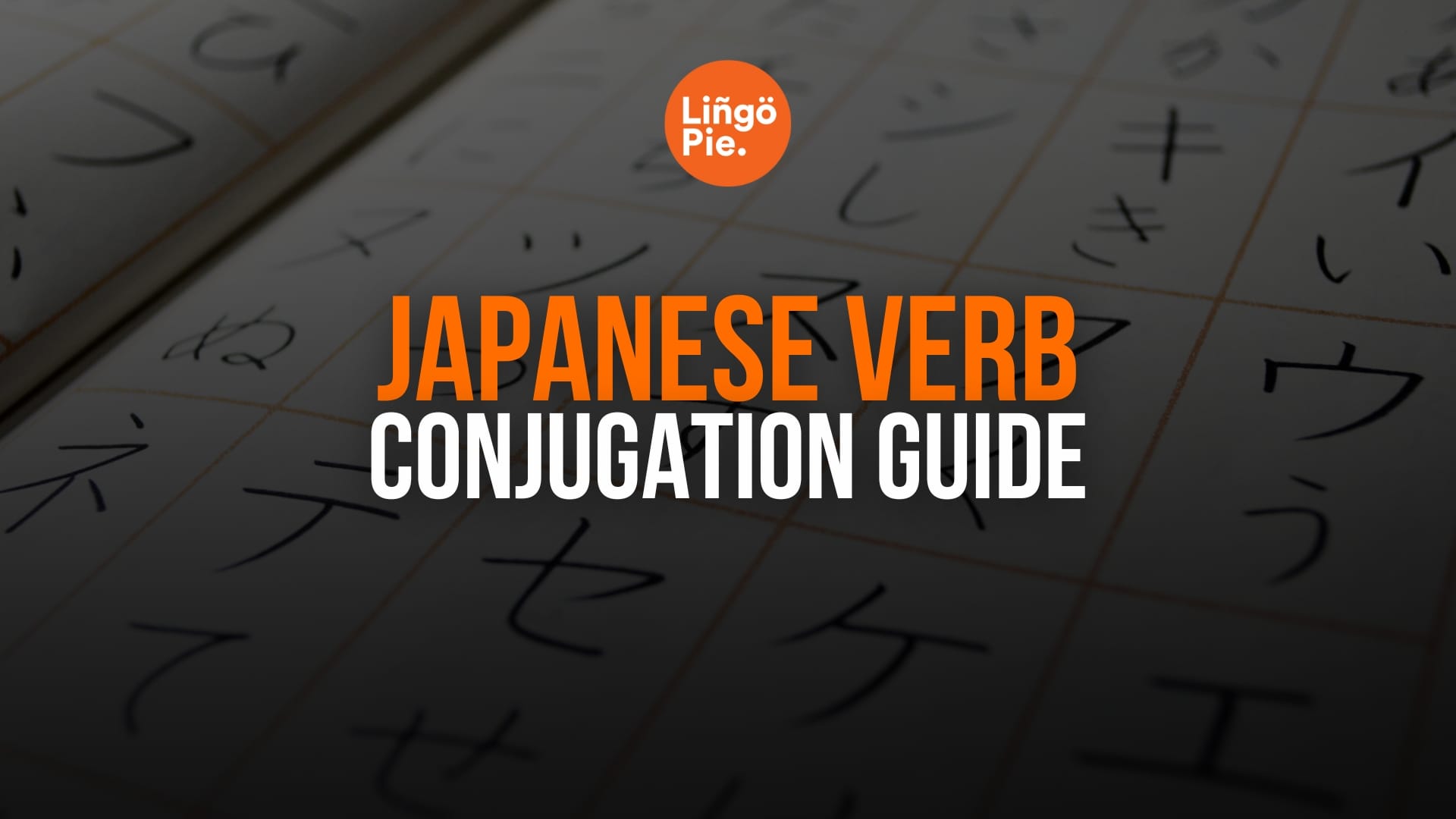Japanese words might not be the first thing you expect to learn from a horror film, but Exit 8 makes a strong case.
This eerie psychological hit, now turning heads at the Cannes Film Festival 2025, drops viewers into a looping Tokyo subway filled with strange warnings, tense silences, and unsettling encounters. It’s the kind of film that lingers. And for Japanese learners out there, this show also offers a chance to absorb real language in a truly unforgettable setting.
Instead of turning away from the tension, lean into it. Let the creeping unease, haunting dialogue, and environmental clues pull you deeper into both the story and the language. If you’re ready to learn Japanese words while navigating one of the most quietly terrifying films of the year, step into the corridor. Just don’t expect an easy way out.
- 18 Inspirational Japanese Quotes And Their Meanings
- What's The Best Way To Learn Japanese? [Guide]
- Japanglish: 26+ Easy Japanese English Words

What Is Exit 8?
Exit 8 (8-ban Deguchi/8番出口) is a 2025 psychological horror film adapted from Kotake Create's popular indie game of the same name. Directed by Genki Kawamura, the story follows a man trapped in an endless subway corridor who must spot anomalies to progress. If he identifies something strange, he must turn back; if everything seems normal, he continues forward. His goal is to correctly navigate this loop eight times to reach the mysterious Exit 8.
The film combines realistic Japanese subway aesthetics with subtle psychological horror, creating tension through its minimalist approach. Scheduled for release in Japan on August 29, 2025, Exit 8 taps into universal anxieties about being trapped in liminal spaces while delivering increasingly disturbing anomalies that challenge viewers' perception of reality.
Exit 8 Rules
What makes Exit 8 so fascinating is how its simple set of rules creates such profound psychological tension. These instructions appear on signs throughout the subway corridor, guiding (or perhaps tormenting) our protagonist. Let's explore these rules in Japanese and see what they mean in English.
Rule 1: The General Warning
"異常を見落とさないでください。" (Ijō o miotosu nai de kudasai.) "Do not overlook any anomalies." This basic rule teaches us the following Japanese terms:
- 異常 (ijō) – "Anomaly" or "abnormality"
- 見落とす (miotosu) – "To overlook" or "miss seeing"
- ないで (nai de) – Negative command form
Rule 2: When Spotting Something Strange
"異常を見つけたら、すぐに引き返してください。" (Ijō o mitsuketa-ra, sugu ni hikikaeshite kudasai.) "If you find anomalies, turn back immediately." This crucial rule teaches the conditional form:
- 見つけたら (mitsuketa-ra) – "If you find" (conditional)
- すぐに (sugu ni) – "Immediately"
- 引き返す (hikikaeru) – "To turn back" (in te-form)
Rule 3: When Everything Seems Normal
"異常がなければ、引き返さないでください。" (Ijō ga nakereba, hikikaesanai de kudasai.) "If there are no anomalies, do not turn back." This rule also teaches the negative conditional form:
- がなければ (ga nakereba) – "If there isn't/aren't"
- 引き返さないで (hikikaesanai de) – "Do not turn back"
Rule 4: The Final Escape
"8番出口から出てください。" (Hachi-ban deguchi kara dete kudasai.) "Please exit from Exit 8." This final instruction contains essential station vocabulary:
- 8番 (hachi-ban) – "Number 8"
- 出口 (deguchi) – "Exit" (literally "out-mouth")
- から (kara) – "From"
- 出る (deru) – "To exit" (in te-form)
The rules sound pretty simple, eh? However, the brilliance of Exit 8 lies in how these four simple rules can create a psychological maze where every detail becomes potentially significant. The constant vigilance required mirrors the heightened awareness many foreigners experience navigating Japan's complex transit systems—making these phrases particularly useful for language learners!

Basic Japanese Words Related To Exit 8
The subway setting of Exit 8 provides a perfect opportunity to learn essential Japanese vocabulary related to public transportation and horror themes. These words will not only help you understand the film but will also be useful if you ever find yourself navigating Japan's subway system (hopefully without any anomalies!).
| Japanese | Romaji | English |
|---|---|---|
| 出口 | deguchi | exit |
| 地下鉄 | chikatetsu | subway |
| 駅 | eki | station |
| 通路 | tsūro | corridor, passageway |
| 異常 | ijō | anomaly, abnormality |
| 迷う | mayou | to get lost |
| 怖い | kowai | scary |
| 恐ろしい | osoroshii | terrifying |
| 幽霊 | yūrei | ghost |
| 妖怪 | yōkai | monster, supernatural creature |
| 変化 | henka | change, transformation |
| 異変 | ihen | strange change, unusual occurrence |
| ループ | rūpu | loop (borrowed from English) |
| 繰り返す | kurikaesu | to repeat |

Japanese Adjectives Related To Exit 8
The psychological horror of Exit 8 taps into a variety of emotions and sensations. Here are some useful Japanese adjectives to describe the experience of watching the film or to express how you might feel trapped in that endless corridor.
| Japanese | Romaji | English |
|---|---|---|
| 不気味な | bukimina | eerie, creepy |
| 奇妙な | kimyōna | strange, bizarre |
| 恐ろしい | osoroshii | terrifying |
| 緊張する | kinchō suru | tense, nervous |
| 不安な | fuanna | anxious, uneasy |
| 薄暗い | usugurai | dimly lit |
| 狭い | semai | narrow, cramped |
| 孤独な | kodokuna | lonely, isolated |
| 閉所恐怖症の | heishokyōfushō no | claustrophobic |
| 無限の | mugen no | infinite, endless |
| 繰り返しの | kurikaeshi no | repetitive |
| 微妙な | bimyōna | subtle, delicate (changes) |

What Are The Anomalies In Exit 8
Part of what makes Exit 8 so unsettling is the wide range of anomalies that appear throughout the film. Each anomaly represents a distortion in reality that the protagonist must recognize to progress. Here's a selection of the anomalies you might spot in the movie, along with the Japanese vocabulary to describe them:
| Anomaly | Japanese | Romaji |
|---|---|---|
| Fast walking man | 速く歩く男 | hayaku aruku otoko |
| Staring man | じっと見つめる男 | jitto mitsumeru otoko |
| Smiling man | 笑顔の男 | egao no otoko |
| Disappearing face | 消える顔 | kieru kao |
| Upside down sign | 逆さまの看板 | sakasama no kanban |
| Moving security poster | 動くセキュリティポスター | ugoku sekyuriti posutā |
| Watching eyes | 監視する目 | kanshi suru me |
| Growing posters | 大きくなるポスター | ōkiku naru posutā |
| Creepy opening door | 気味悪く開くドア | kimiwaruku hiraku doa |
| Flickering lights | ちらつく照明 | chiratsuku shōmei |
| Black slime | 黒いスライム | kuroi suraimu |
Learning these Japanese words won't just help you talk about the film—they might even save your life if you ever find yourself trapped in an endless Japanese subway corridor!
- 6 Best Japanese Documentaries To Learn Japanese
- 4 Best Japanese Cooking Shows Every Traveler Should See
- How To Write The Japanese Kanji For Love [+ FREE PDF]
Why Horror Helps You Learn Faster
Horror works surprisingly well as a language learning tool. When you're on edge, your brain becomes hyper-aware, perfect for picking up new Japanese words and phrases. You’re not just reading subtitles or memorizing flashcards. You're feeling the language. That sharp whisper in the dark or the warning written on a subway sign? It sticks with you because your brain knows it matters.
Exit 8 uses minimal dialogue, but every word it does include is loaded with context and consequence. That makes it ideal for learning vocabulary related to observation, reaction, emotion, and movement, all wrapped in an unforgettable experience. If you've ever struggled to remember new words, horror might be just the adrenaline boost your study routine needs.
Learning Japanese with Lingopie
If Exit 8 has sparked your interest in learning Japanese through film and media, Lingopie offers the perfect platform to continue your journey. With Lingopie, you can watch Japanese films and shows with interactive dual subtitles, allowing you to click on any word to see its translation and add it to your personalized vocabulary list.
Ready to take your Japanese skills beyond Exit 8? Sign up for a free 7-day trial of Lingopie to start watching hundreds of hours of Japanese content with learning tools built right in. Whether you're a complete beginner or looking to advance your skills, there's something for every level!
Remember, just like spotting anomalies in that endless corridor, language learning is about noticing patterns and differences. Keep your eyes open, and don't overlook any linguistic anomalies along the way to fluency!
Frequently Asked Questions About Exit 8
When will Exit 8 be released internationally?
Exit 8 premieres at the 2025 Cannes Film Festival in May as part of the "Midnight Screenings" category. The film is scheduled for theatrical release in Japan on August 29, 2025. International distribution rights are still being negotiated, but the film is expected to receive a global release in late 2025 or early 2026. Based on the critical reception at Cannes, streaming platforms may also acquire rights for specific territories.
How scary is Exit 8 compared to other Japanese horror films?
Exit 8 focuses on psychological tension rather than jump scares, making it more unsettling than traditionally frightening. Unlike gore-heavy J-horror classics like "Ju-On" or "Ringu," Exit 8 creates dread through subtle environmental changes and the anxiety of pattern recognition. Director Genki Kawamura has described it as "horror through mundanity" where everyday spaces become threatening. The film's realistic subway setting makes it particularly effective for viewers who regularly use public transportation.
What are the most difficult anomalies to spot in Exit 8?
The growing posters anomaly is notoriously difficult to notice, as it changes gradually over time rather than appearing suddenly. The "watching eyes" security poster where the eyes subtly move is easy to miss unless you're staring directly at it. The doorknob shifting to the middle of a door is also challenging because it requires recalling the door's previous appearance. Many viewers report missing the "ceiling smear" anomaly multiple times due to its subtle nature. The "Exit sign message change" is particularly tricky because it requires actually reading the text rather than just recognizing visual differences.
Is Kiyosumi-shirakawa Station safe to visit for Exit 8 fans?
Kiyosumi-shirakawa Station is completely safe and operates as a normal Tokyo subway station despite inspiring Exit 8's most famous anomaly. The diagonal ceiling lights near Exit 3 served as direct inspiration for the game and film, creating a unique photo opportunity for fans. Japanese social media users have jokingly warned that international Exit 8 fans might get a shock when visiting the real location. The station is located on Tokyo's Hanzomon and Toei Oedo lines and serves as a regular commuter station with no supernatural occurrences reported.
How much Japanese do I need to know to understand Exit 8?
You don't need any Japanese knowledge to enjoy Exit 8 as the film relies primarily on visual storytelling with minimal dialogue. The international release will include subtitles for the limited Japanese text and speech that appears in the film. Learning basic subway vocabulary like "出口" (deguchi/exit) and "異常" (ijō/anomaly) can enhance your appreciation of the film's environment. The film actually serves as an excellent introduction to practical Japanese vocabulary related to transportation and directions.






![A Guide To Kansai-ben Dialect For Beginners In Japanese [2026]](/blog/content/images/size/w300/2025/03/Kansai-ben-dialect.jpg)


